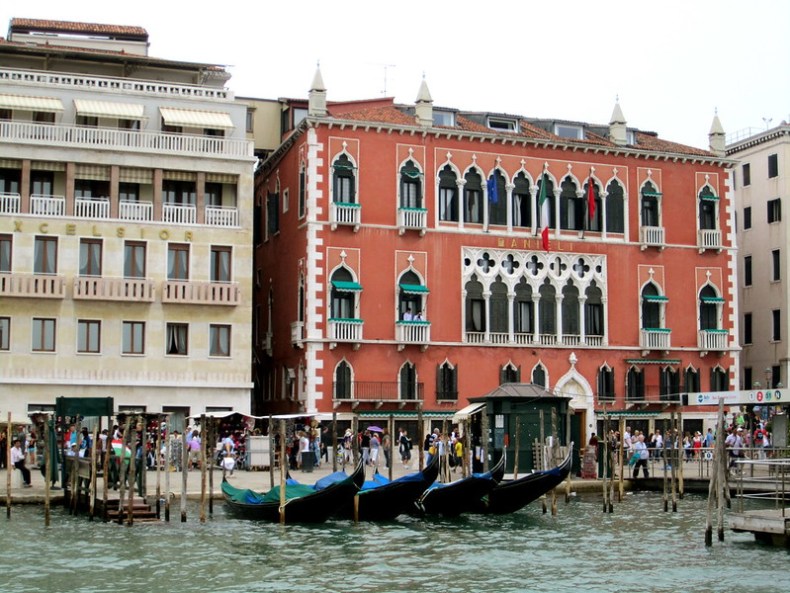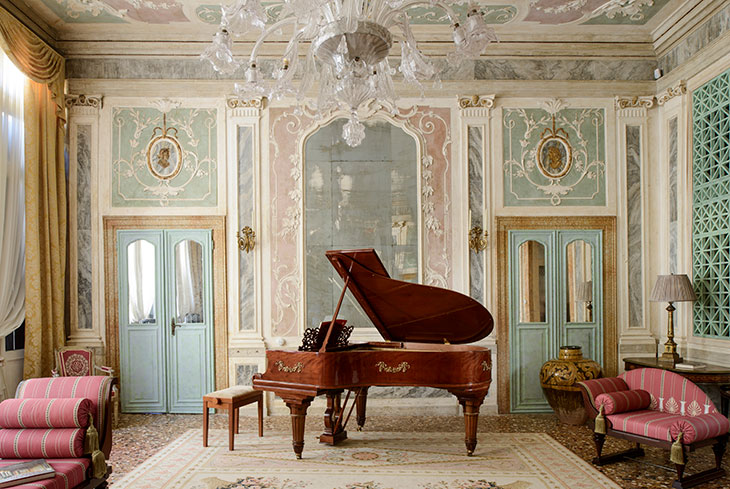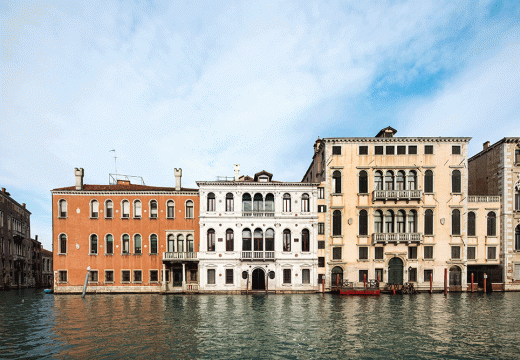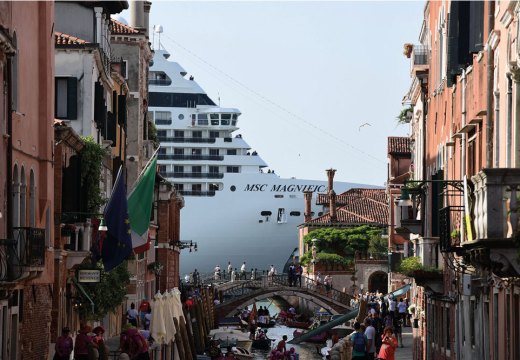The scruffy, forlorn facade of the Palazzo Priuli Manfrin, a neoclassical palace facing on to the Cannaregio Canal, is easily glanced at and dismissed. Most passers-by would hardly guess that it was once the historic seat of the Priuli family, an aristocratic clan that produced several Doges of Venice, and once home to a prestigious painting collection considered the precursor to that of the Gallerie dell’Accademia. The palazzo, which was originally built in around 1520 and reconstructed in the 18th century, has stood empty for years, crumbling just like so many grand palazzi of the canal city.
The sculptor Anish Kapoor recently announced plans to revive the decaying building. The project will see the creation of studios and workshops, exhibition spaces for temporary shows and displays of some of the artist’s key works. The educational programme, says the Anish Kapoor Foundation, will include conferences and workshops for scholars, sculptors and other contemporary artists.
The news that a historic palazzo will be restored and opened to the public has been met with enthusiasm. ‘Thanks to this important acquisition, another palace in the city of Venice will once again show all its beauty and magnificence, and have a function worthy of its past,’ Luigi Brugnaro, mayor of Venice, said in a statement.
It is a welcome development in particular for those frustrated by the tendency for historic palaces to be converted to luxury hotels or private rental accommodation. ‘It’s a very positive initiative,’ says Melissa Conn, director of the Venice office for Save Venice, an American non-profit heritage organisation. ‘These buildings are really difficult to maintain and it’s nice to see this type of initiative instead of another hotel.’

View of Hotel Danieli, Venice. Photo: La-Citta-Vita on Flickr (CC BY-SA 2.0)
The palazzi of Venice have long been sought after as accommodation for tourists – the five-star Hotel Danieli, for example, opened inside the 14th-century Palazzo Dandolo in the 1820s. But in recent years these conversions have picked up pace; the latest projects to be announced include Langham Hospitality Group’s first Italian hotel, which will be housed in the former Casino Mocenigo on the island of Murano, and Rosewood Venice hotel, which will open within the 15th-century Palazzo Dona’ Giovannelli in the Cannaregio district of the city.
When we speak, Conn says she is pleased that Kapoor’s conversion will bring more contemporary art to Venice. But hotel conversions can also be more damaging to a palazzo interior. Conn cites the process of installing bathrooms for every hotel room, for example, or the tendency to place dividing walls in large spaces such as the rooms of the piano nobile. It is also often necessary to install air conditioning as well as servicing ducts, lifts and mechanical plants, which can disfigure the historic fabric. The surrounding urban environment, meanwhile, can be negatively affected by the increase in boat traffic to serve the hotel.
Conn echoes the views of many Venetians when she says how refreshing a novel cultural institution is in comparison to another hotel or Airbnb. But there are a lot of these historic structures in desperate need of costly repairs. Béatrice de Reyniès of the Fondazione dell’Albero d’Oro, which is converting Palazzo Vendramin Grimani into a cultural centre, told Apollo in May that many of the city’s vacant palazzi are in such a dilapidated state that restorations end up taking years and incurring astronomical costs. The foundation instead opted for a building of manageable proportions and already in reasonable shape in order to keep the restoration affordable.
With many palazzo restorations simply unaffordable for non-profits, there are plenty of sites available for (potentially more generously funded) hotel conversions and private restorations. The teams behind these projects are not necessarily any less passionate about cultural heritage than a non-profit foundation. Take the London-based architect John Simpson, for instance, who recently bought and restored Palazzo Grimani in the San Marco district; the family now rents it out as guest accommodation.

An interior view of John Simpson’s restoration of Palazzo Grimani, Venice. Photo: Madeleine Shanks
The original function of the 17th-century building is unclear, though it was possibly a casino, and from 1964 until 2012 it was home to the Bridge Club of Venice. Simpson and team made the costly and ambitious decision to reverse the Bridge Club’s alterations to the building’s interior – stripping the layers of nicotine, paint, and yellow silk from the walls and the parquet from the floor – and were rewarded with an 18th-century fresco cycle and the original terrazzo flooring. At the same, the structure had to be ‘rearranged and upgraded’ to cater to its new use. This included installing a domestic kitchen and bathrooms. As Simpson tells me via email, while this alters the original architecture, practical reuse is the only way a building is ‘given a new lease of life’. ‘A building is not an object that you restore and keep as an ornament. It is rare that an investment of that size can be kept without it serving a useful purpose.’
Hoteliers and private owners can also argue that their restorations are more in keeping with the original function of many of these palazzi, which began as private family residences. ‘In order to preserve the historic fabric of a building it is always best to find a use as close as possible to the use for which it was originally designed,’ Simpson says. ‘A compatible use inevitably requires less intervention and reduces interference and removal of historic fabric. A similar use will also mean that the historic fabric, once restored, is not subject to an inappropriate level of wear and tear afterwards.’
In fact, while hotel or guest accommodation can require invasive interventions, so too may museum transformations. As Simpson explains, ‘Turning a building from a house to a museum is always a problem as you have a much greater throughput of people through doors, openings and corridors that are probably too narrow and along floor surfaces that are not sufficiently durable.’ Venetian palazzi often have lime terrazzo floors that struggle to withstand the same foot traffic as a stone floor, for example.
While it sometimes seems like ‘everything is turning into a hotel’, as Conn says, having hotels in the historic centre is generally more desirable than on the mainland, where they encourage day-tripper tourism. And at least hotel conversions save these grand historic buildings from falling down. ‘With a historic building it is all a matter of balance,’ says Simpson. ‘The damage has to be weighed against the benefit that it brings.’
Unlimited access from just $16 every 3 months
Subscribe to get unlimited and exclusive access to the top art stories, interviews and exhibition reviews.














![Masterpiece [Re]discovery 2022. Photo: Ben Fisher Photography, courtesy of Masterpiece London](http://www.apollo-magazine.com/wp-content/uploads/2022/07/MPL2022_4263.jpg)
It’s time for the government of London to return to its rightful home